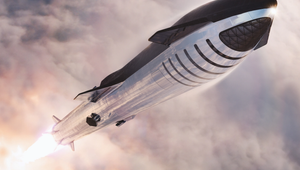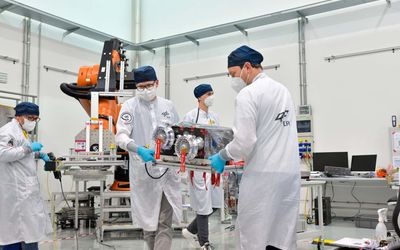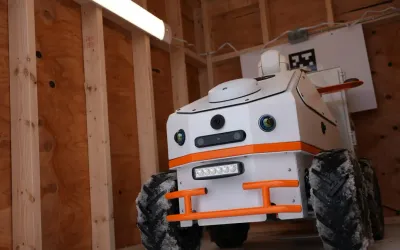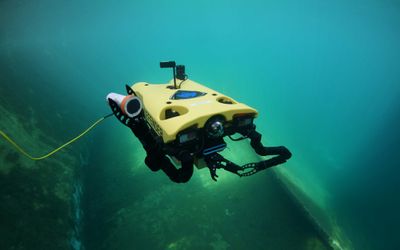Saildrone
An unmanned surface vehicle (USV) that combines wind-powered propulsion technology and solar-powered meteorological and oceanographic sensors to perform autonomous long-range data collection missions in the harshest ocean environments. Saildrone’s propulsion system consists of a tall, hard wing, a longitudinal spar, and a vertical tail. A trim-tab on the tail adjusts the wing angle to the wind, similar to the way an elevator trim tab controls the pitch of an aircraft. The Saildrone wing technology enables a mission duration of up to 12 months. Mission duration is only limited by bio-fouling (marine growth on the hull) in the tropics and mid-latitudes or the availability of light and icy conditions in high latitudes.
Technical Specifications
| Hull length | 7 |
| Wing height | 5 |
| Weight | 750 |
| Average speed | 2-3 |
| Top speed | +8 |
| Payload | 20 |
Overview
Saildrone’s propulsion system consists of a tall, hard wing, a longitudinal spar, and a vertical tail. A trim-tab on the tail adjusts the wing angle to the wind, similar to the way an elevator trim tab controls the pitch of an aircraft. The Saildrone wing technology enables a mission duration of up to 12 months. Mission duration is only limited by bio-fouling (marine growth on the hull) in the tropics and mid-latitudes or the availability of light and icy conditions in high latitudes.
Saildrone USVs are under the constant supervision of a human pilot via satellite and navigate autonomously from prescribed waypoint to waypoint, accounting for wind and currents, while staying within a user-defined safety corridor. To ensure safe operation, each USV is equipped with an automatic identification system (AIS) transceiver, navigation lights, radar reflector, high visibility wing colors, and four onboard cameras.
The Saildrone sensor payload consists of approximately 20 science-grade sensors, integrated in close partnership with NOAA’s Pacific Marine Environmental Laboratory.
The sensor package measures key atmospheric and oceanographic environmental variables in real time including solar irradiance, long wave radiation, atmospheric pressure, air temperature and humidity, wind speed and direction, ocean skin temperature, bulk water temperature, chlorophyll and colored dissolved organic matter, atmospheric and seawater partial pressure of CO2, dissolved oxygen, salinity, and acidity levels.
The USVs have also been equipped with acoustic Doppler current profilers (ADCP), scientific echo-sounders for biomass assessment and bathymetry surveys, and passive acoustic recorders for marine mammal studies. The sensor package is connected to onboard computers that transmit the data via satellite communications to our shore-based data centers.
References
Describes the project, it's specifications, payload, and talks about the fleet.











